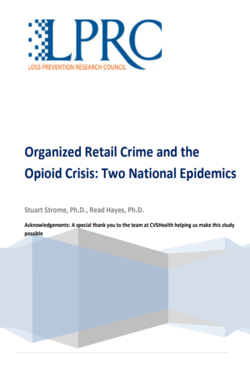By Kalle Lind
While gambling is a harmless and popular pastime for most people, as a habitual activity it also has the potential to cause harm to the gamblers themselves and their affected others. These gambling harms are not static but vary in terms of intensity and duration. Such negative consequences can affect several different life-domains, and they may include financial problems, emotional distress, disrupted relationships, cultural harms, intergenerational harms, decrements in health, reduced performance at work or studies, or criminal behavior. Comorbidity between problem gambling, mental health problems, and other addictions as well as the connection between problem gambling and social disadvantage on various measures have been confirmed by previous studies. Problem gambling has been recognized as a criminogenic factor, and it is highly prevalent among incarcerated populations. Criminogenic problem gambling refers to a situation where problem gambling and the related financial distress escalate to criminal behavior, typically to income-generating crime such as fraud and embezzlement. Criminal harm has been suggested to be a late-stage gambling harm, which occurs together with long-standing and untreated problem gambling as gamblers run out of legal financial options. Furthermore, previous studies indicate that a more general association also exists between problem gambling and non�gambling related crime in a population level. Not only is the gambling participation rate very high in Finland, but gambling has also had an exceptional position in Finland’s culture, society, and everyday life for decades. At the same time, 2.5% of gamblers are estimated to account for 50% of the total gambling expenditure. The latest population survey indicates that the prevalence of problem gambling is about 3% of the population. The core regulative framework, the recently reformed Lotteries Act, underscores minimization and prevention of gambling-related economic, health�related, and social harms, including criminal activity. In this context, this dissertation addresses the connection between problem gambling and criminal behavior through 1) data derived from documents produced by the police on 55 problem gambling-related cases, 2) screening data (N = 1,573) from a national problem gambling support program, 3) pilot survey data (n = 96) collected at two Finnish prisons, and 4) gambling-related population survey data (n = 7,186) combined with register-based variables on convictions and social disadvantage. Through qualitative document analysis this study explores patterns and mechanisms of problem gambling-related crime reported to the police. Logistic regression is utilized to find predictors of problem gambling-related stealing and cheating among help-seeking problem gamblers. Furthermore, this study explores the prevalence of probable problem gambling (measured using the Brief Biosocial Gambling Screen), the need for support, and support preferences in prison environment. Finally, logistic regression models were run to explore the general association between problem gambling severity, socioeconomic disadvantage, and having a conviction. Most of the problem gambling-related cases found from the police information system were nonviolent property crimes that were committed at home or at the workplace. In most cases the events were preceded by severe financial problems, the emergence of suitable opportunities to commit a crime and coexisting issues of lifecontrol, such as depression, relationship problems, and substance use. The criminal incidents were classified in three categories: identity theft, unauthorized access, and violent outburst. The crime aftermath consisted of the psychologically distressing process of hiding the trails and revival through getting caught. Reportedly, the main motivation for the crimes was to continue gambling, chase losses, or hide the extent of the individual’s problem 3 gambling from their affected others. Consistent with previous literature, the results reveal that among help-seeking problem gamblers, being young and having low income and low education predicted gambling-related stealing and cheating. Furthermore, as expected, a long duration of gambling problems also predicted cheating and stealing. Depressive symptoms and having a negative perception on one’s financial situation were also associated to problem gambling-related stealing or cheating. Gender, starting age of gambling, and comorbid substance use were not found to be statistically significant predictors of criminogenic problem gambling. Overall, 37.6% of the screened attendees reported having cheated or stolen to fund their gambling.
Tampere, Finland: Tampere University, 2022. 208p.


















